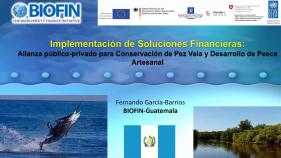
Uganda’s second National Biodiversity Strategy and Action Plan (NBSAP II) concluded that inadequate financial resources for implementing planned activities was one of the key barriers limiting realisation of the country’ biodiversity targets. The Government set about addressing the financial barrier by developing guidelines and actions for financing biodiversity conservation in Uganda. In 2015, the Government embarked on a definitive process of developing a financial resource mobilisation plan when it joined the Biodiversity Finance Initiative (BIOFIN). BIOFIN was developed in response to the 10th Conference of the Parties (COP-10) of the Convention on Biological Diversity (CBD) which identified the need for better information on current expenditures and financing needs, and for a comprehensive methodology to develop resource mobilization strategies. At country level, BIOFIN brought together a core group of national stakeholders from the ministries, water for environment (MWE); Tourism, Wildlife and Antiquities (MTWA); Energy and Mineral Development (MEMD); Agriculture, Animal Industry and Fisheries (MAAIF); Local Government (MoLG); and Gender, Labour and Social Development (MoGLSD), the private sector (Private Sector Foundation Uganda-PSFU), and civil society (including the International Union for the Conservation of Nature – IUCN, Environment Conservation Trust (ECOTRUST) Uganda, and Nature Uganda) to implement a road map that led to this National Biodiversity Finance Plan. Uganda’s BIOFIN project produced four outputs, the Biodiversity Policy and Institutional Review (PIR), the Biodiversity Expenditure Review (BER), the Biodiversity Finance Needs Assessment (FNA), and the National Biodiversity Finance Plan (NBFP).
The Vision for Uganda’s NBFP is “sustainable and innovative financing for biodiversity conservation and management attained by 2027/28”. The mission of the NBFP is “to mobilise adequate additional financial resources to meet the biodiversity funding gap as well as ensure that funds are used efficiently and effectively to address the biodiversity and ecosystem challenges in biodiversity and ecosystem conservation and management.”



